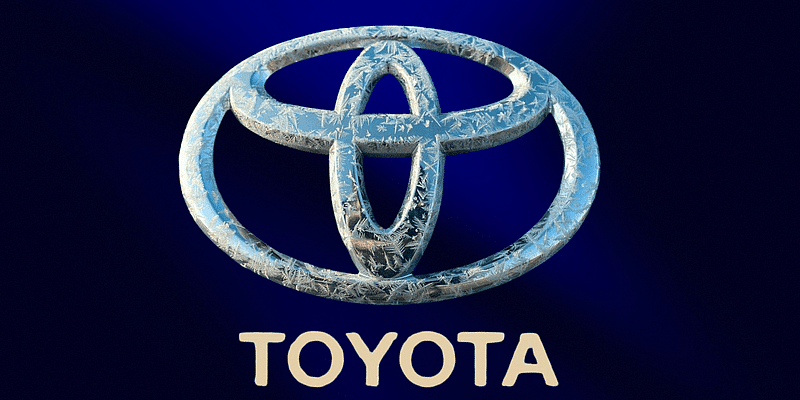
In a recent leak of internal documents from Toyota, a company that has long been hesitant to fully embrace electric vehicles (EVs), a controversial stance has been revealed. The document outlines what’s known as the “1:6:90 Rule,” a fascinating perspective on the future of vehicle manufacturing and its environmental impact. But is Toyota onto something with this strategy, or are they missing the electric vehicle wave? Let’s delve into the differences between electric, plug-in hybrid, and hybrid vehicles to better understand this debate.
Understanding the 1:6:90 Rule
The 1:6:90 Rule essentially posits that the raw materials required to manufacture one battery electric vehicle could alternatively be used to produce six plug-in hybrids or a staggering 90 hybrid vehicles. Toyota argues that the overall carbon reduction achieved by these 90 hybrids over their lifetime is 37 times greater than that of a single battery electric vehicle.
Electric Vehicles (EVs)
Electric vehicles run solely on electric power stored in high-capacity batteries. They produce zero tailpipe emissions and are seen as a crucial component of reducing greenhouse gas emissions in the transportation sector. EVs have gained popularity due to their environmental benefits and the decreasing cost of battery technology.
Pros:
- Zero tailpipe emissions
- Lower operating costs
- Reduced dependence on fossil fuels
- Instant torque for quick acceleration
Cons:
- Limited driving range (though improving)
- Longer refueling times compared to traditional vehicles
- Cost of battery replacement
Plug-in Hybrid Vehicles (PHEVs)
Plug-in hybrids combine a traditional internal combustion engine with a battery and electric motor. They can run on electric power alone for a limited range before switching to gasoline. PHEVs offer the flexibility of using electricity for short trips while relying on gas for longer journeys, making them a transitional option for those hesitant to fully commit to electric.
Pros:
- Greater driving range than EVs
- Ability to use electricity or gasoline
- Reduced emissions during short trips
- Tax incentives in some regions
Cons:
- Limited electric-only range
- More complex drivetrain
- Higher purchase price than traditional vehicles
Hybrid Vehicles
Hybrids, like Toyota’s iconic Prius, use a combination of an internal combustion engine and an electric motor. Unlike PHEVs, they cannot be plugged in to charge the battery; instead, the battery is charged through regenerative braking and the internal combustion engine.
Pros:
- Improved fuel efficiency
- Lower emissions than traditional vehicles
- Regenerative braking extends range
- Well-established technology
Cons:
- Limited electric-only driving
- Less fuel-efficient on highways
- Battery eventually requires replacement
Toyota’s Controversial Stand
With the 1:6:90 Rule, Toyota is making a bold statement about the efficiency and environmental impact of different vehicle types. They argue that by focusing on hybrids, which have a lower production cost and higher efficiency, they can make a more significant impact on reducing emissions.
Is Toyota Right?
The question of whether Toyota is correct in its approach is a complex one. On one hand, the 1:6:90 Rule presents compelling data about the potential impact of prioritising hybrid vehicles. The efficiency and affordability of hybrids make them accessible to a broader market, potentially leading to more widespread adoption and emissions reduction.
However, critics argue that Toyota’s reluctance to fully embrace electric vehicles could hinder innovation and progress in the industry. EVs are rapidly improving in terms of range, affordability, and charging infrastructure. Many believe that a diverse approach, including a focus on EVs alongside hybrids, is necessary to combat climate change effectively.
Final Thoughts
In the rapidly evolving landscape of automotive technology, the debate between electric, plug-in hybrid, and hybrid vehicles continues. Toyota’s 1:6:90 Rule offers a unique perspective on how different vehicle types can impact the environment. While their emphasis on hybrids has its merits, the push for electric vehicles as a long-term solution to reducing emissions remains strong.
As consumers, it’s essential to consider our individual needs, driving habits, and environmental impact when choosing a vehicle. Whether it’s the instant torque of an EV, the flexibility of a PHEV, or the efficiency of a hybrid, each option plays a role in shaping the future of sustainable transportation. As for Toyota’s stance, only time will tell if the 1:6:90 Rule becomes a guiding principle or a footnote in the history of automotive innovation.








![Read more about the article [Year in Review 2021] Lives, livelihood, lifestyle – 60 quotes of the year from India’s COVID-19 struggle](https://blog.digitalsevaa.com/wp-content/uploads/2021/12/SS5-1640349517915-300x150.png)

